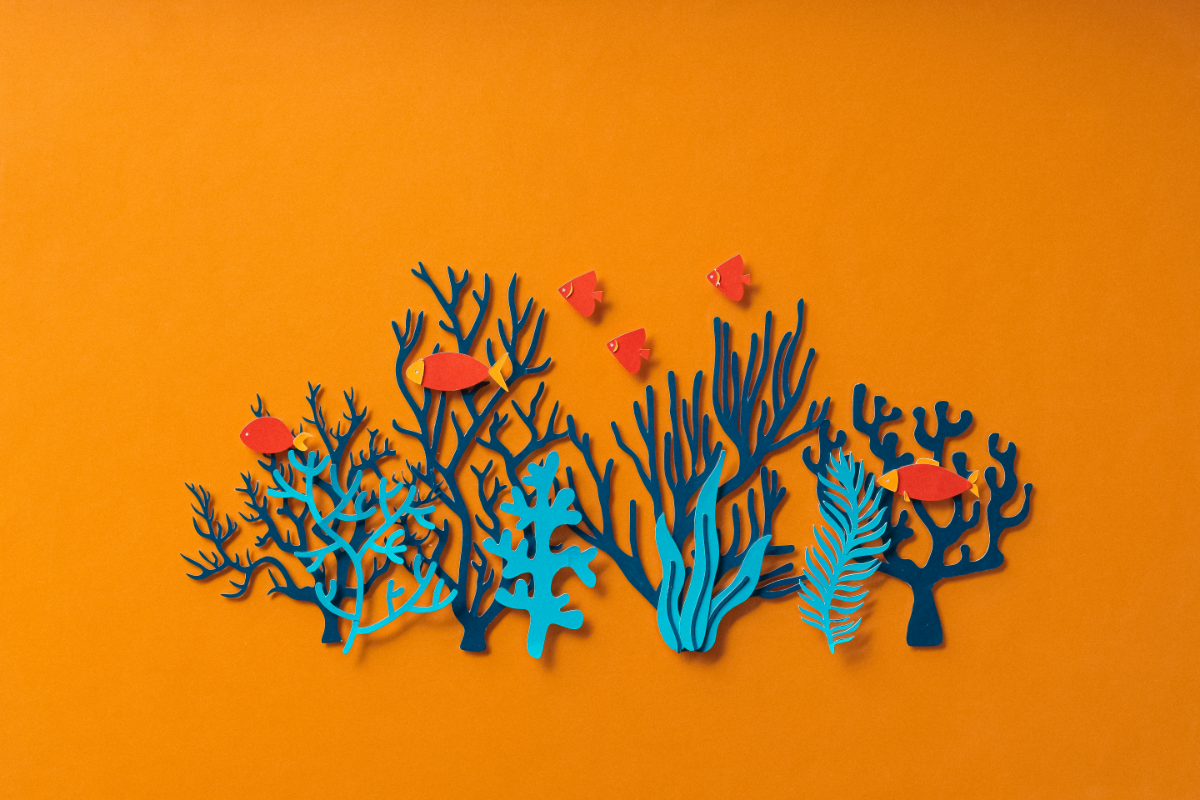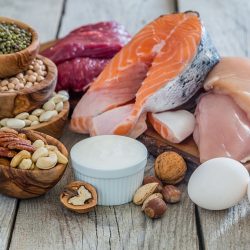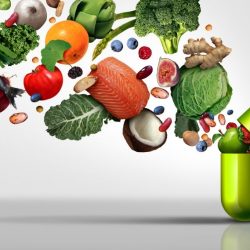Eating fish is not inherently bad for your health, but over the years more and more studies have shown that due to overfishing and the large amount of plastic in our seas, fish contains more and more unhealthy toxic substances .
Toxins present in fish
Some species of fish may have high concentrations of mercury and other toxic substances . Regular consumption of these fish can lead to an accumulation of heavy metals in the body, which can pose a health risk, particularly for pregnant and lactating women as well as children .
Contaminated fish flesh
- Mercury is a natural element present in small quantities in the environment. Fish therefore absorb it in the water via the food chain. It can, however, be introduced into the environment through human activities, including industrial emissions, coal burning and waste disposal.
- Fish can also be contaminated with other environmental pollutants such as polychlorinated biphenyls (PCBs) and dioxins .
PCBs are a group of chemical compounds that are difficult to degrade and can accumulate in the environment. They are very stable and resistant to chemicals. Dioxins are among the most toxic chemical compounds in the environment. They are a group of organic compounds that are byproducts of certain industrial processes, waste incineration and other combustion processes.
Long-term exposure to PCBs and dioxins can lead to health problems such as liver damage , impaired immune system , neurological disorders , and reproductive harm .
Overfishing
Overexploitation of fish stocks in oceans around the world has led to dramatic declines in many fish species. Overfishing can destroy ecosystems and endanger entire fish populations. Consumption of overexploited species can contribute to worsening the problem and compromising the sustainable management of marine resources.
Today, 33% of the seas are already overexploited and 60% are seriously threatened . Only 7% of the seas are underexploited.
The scourge of accidental capture
The type of bycatch depends on the fishing method: Dolphins, porpoises and large cetaceans die in nets, birds die in longline fishing, while bottom trawls destroy entire marine ecosystems. It is estimated that around 100 million sharks and rays die each year as bycatch. Dolphins and sharks are particularly numerous to die during tuna fishing. And because they can no longer free themselves from the nets, around 300,000 cetaceans (large cetaceans, dolphins and porpoises) die each year .
Destructive bottom trawling is emptying the entire seabed of all the species that live there. Thus, it is not only the targeted fish species that end up in the nets, but also commercially unattractive species such as starfish and sponges. Even a single trawl haul can result in the loss of 20% of the seabed fauna and flora in the area concerned. Accidental catches are highest in shrimp fishing: in addition to shrimp, more than 80 percent of other species are found in the nets.
The importance of whales and coral reefs in reducing CO2 emissions
However, protecting coral reefs and whales goes hand in hand with protecting the climate . Coral reefs and whales are huge reservoirs of CO2. Whales can store as much CO2 as 1000 trees and corals absorb up to 40% of greenhouse gases . By stopping fishing, we could therefore help the climate enormously, or even largely stop climate change. Scientists estimate that the animal population has declined by 66% to 90%. This has probably already changed the structure of the oceans.
The problem with fish farms
Raising fish in aquaculture has become a common practice to meet the growing demand for fish. However, fish farms can be associated with various environmental problems , such as pollution from fish feces and the use of antibiotics and chemicals . However, excessive use of these substances can lead to resistance and leave residues in fish which can be transmitted to humans.
Is fish rich in omega-3?
Fish is often eaten under the guise that it contains essential omega-3 fatty acids . It’s true. But if we look at why fish contains omega-3, we realize that we could avoid all the toxic substances contained in fish by using food supplements .
Can food supplements replace our fish consumption?
In our tireless pursuit of balanced nutrition, we have learned to appreciate the value of omega-3 fatty acids. Traditionally, we tend to turn to fish, consuming them in abundance for their purported benefits. However, beyond the fish itself, it is the origin of these omega-3s that deserves our attention.
Why does fish contain omega-3?
The answer lies in algae. They are the ones that produce omega-3 fatty acids, essential nutrients that the human body cannot produce on its own. Marine algae are particularly rich in docosahexaenoic acids (DHA) and eicosapentaenoic acids (EPA), two types of omega-3 of great nutritional value . Small fish, such as sardines, herring and mackerel, consume these algae and, as a result, absorb these fatty acids and store them in their bodies.
However, there is an important dimension of this marine food chain that we often overlook: the presence of potential toxic substances in fish. This is where omega-3 supplements come in. Through their use, we can circumvent the potential risk of consuming these toxic substances, while benefiting from the richness of omega-3s that we are looking for.
Opting for omega-3 food supplements not only has an advantage in terms of food safety , but also sustainability . By reducing our consumption of fish, we are helping to alleviate the growing problem of overfishing. Omega-3 supplements, when extracted ethically and sustainably, offer an environmentally responsible alternative to eating fish.
Ultimately, by choosing omega-3 supplements, we are making an informed decision that takes into account our personal health and the health of our planet. An approach that truly embodies the principle of eating healthily while living sustainably. A solution that could well represent the future of our nutrition.
The many benefits of algae
- Nutritional and healthy : Seaweed is an excellent source of food and is rich in essential nutrients such as protein, fiber, vitamins (e.g. vitamin B12 and vitamin C) and minerals (e.g. iron and calcium). They also contain essential omega-3 fatty acids, which are important for heart and brain health.
- Sustainable food source : Compared to agricultural crops, algae requires less land and water to grow. They can be grown sustainably in aquaculture, without harming the environment or using valuable resources.
- CO2 absorption : algae play an important role in regulating the carbon cycle in the oceans. They absorb CO2 from the atmosphere and help reduce the greenhouse effect and climate change.
- Environmental protection : Algae can help improve water quality in aquatic ecosystems by absorbing and filtering pollutants such as heavy metals and excess nutrients.
- Cosmetics and health products : Seaweed extracts are widely used in the cosmetic industry and health products because they possess moisturizing, soothing and antioxidant properties.
Towards a more responsible mode of consumption
In summary, the beauty of our times lies in the abundance of alternative choices available. Indeed, the use of seaweed as a vegan alternative to fish is becoming more and more widespread. These replacement products , rich in omega-3 fatty acids, allow consumers to continue to enjoy the nutritious aspect of fish and shellfish while making an eco-responsible choice .
However, for those whose palate is not seduced by the taste of seaweed, the range of alternatives is not limited to that. Other food supplements are also at hand. Legumes , for example, are an excellent source of protein, while nuts and tofu are great alternatives for a balanced diet.
So, by exploring these alternatives and making informed dietary decisions, we can not only look after our personal health, but also help protect our precious marine biosphere . For those of us who want to get further down this road, stay tuned for other ways to combine optimal nutrition and respect for the environment.
Sources:
- Overfishing and its effects on the marine environment:
- Pauly, D., & Zeller, D. (2016). Sea Around Us Concepts, Design and Data (seaaroundus.org). http://www.seaaroundus.org/data/#/global?chart=catch-chart&dimension=Taxon&measure=Weight&limit=10
- Worm, B., Barbier, EB, Beaumont, N., Duffy, JE, Folke, C., Halpern, BS, … & Sala, E. (2006). Impacts of biodiversity loss on ocean ecosystem services. Science, 314(5800), 787-790.
- Marine ecology:
- Halpern, B.S., Walbridge, S., Selkoe, KA, Kappel, CV, Micheli, F., D’Agrosa, C., … & Watson, R. (2008). A global map of human impact on marine ecosystems. Science, 319(5865), 948-952.
- Doney, SC, Ruckelshaus, M., Duffy, JE, Barry, JP, Chan, F., English, CA, … & Polasky, S. (2012). Climate change impacts on marine ecosystems. Annual review of marine science, 4.
- Seaweed as a sustainable food substitute:
- Mouritsen, OG, Rhatigan, P., & Pérez-Lloréns, JL (2019). A New World of Algae. In Perspectives in Phycology. DOI: 10.1127/pip/2019/0092.
- Holdt, S.L., & Kraan, S. (2011). Bioactive compounds in seaweed: functional food applications and legislation. Journal of Applied Phycology, 23(3), 543-597.
- Fleurence, J., Gutbier, G., Mabeau, S., & Leray, C. (1994). Fatty acids from 11 marine macroalgae of the French Brittany coast. Journal of Applied Phycology, 6(5-6), 527-532.





